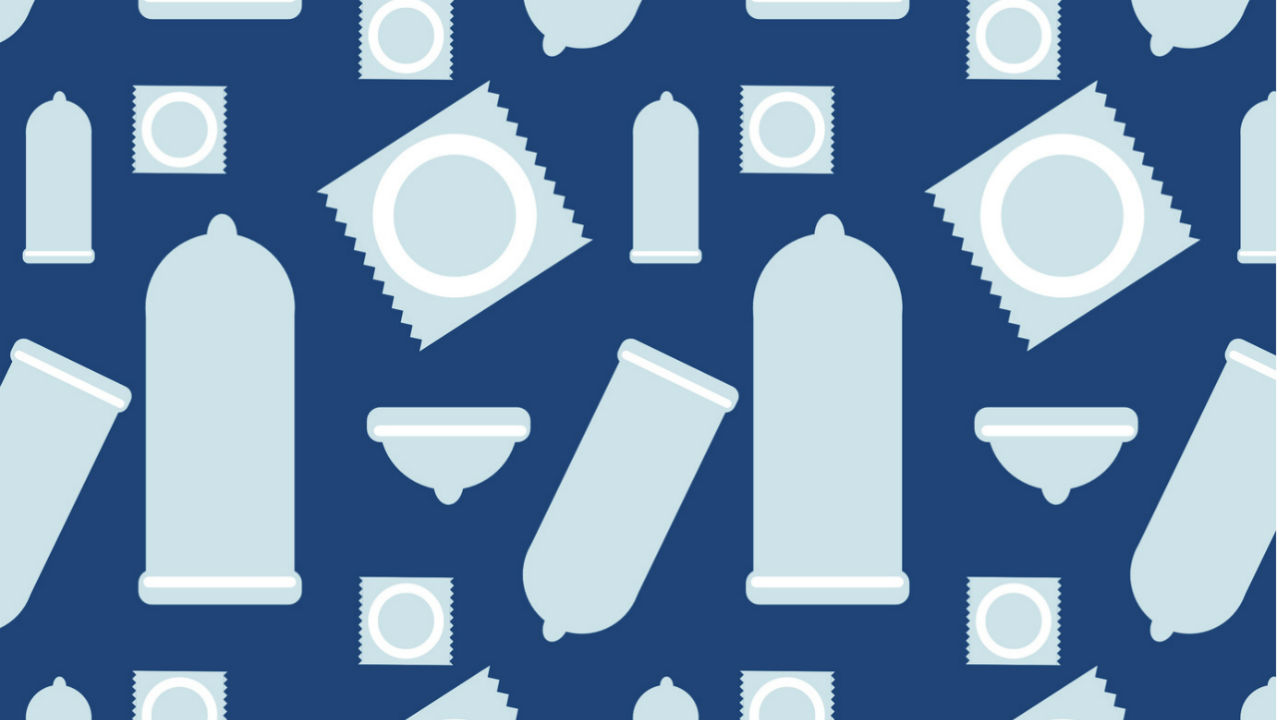Sexually transmitted diseases or STDs are infectious diseases that are spread from person to person through intimate contact. STDs can be caused by bacteria or viruses and in one type, a parasite. If untreated, some STDs can lead to infertility, cervical cancer and permanent damage to the body. It is important to learn the facts so that you can protect yourself against these serious health problems.
The Most Common STDs
The most common STDs are chlamydia, gonorrhea, genital herpes, syphilis, genital human papillomavirus (HPV), hepatitis B and D, HIV and trichomoniasis. Chlamydia, gonorrhea and syphilis are caused by bacteria. Genital herpes, HPV, as well as hepatitis B, hepatitis D and HIV, are caused by viruses. According to the Centers for Disease Control, chlamydia is the most commonly reported STD in the United States. The highest reported rates of gonorrhea are among sexually active teenagers, young adults and Afro-Americans. HPV is the most commonly transmitted STD.
How chlamydia is spread
Chlamydia can be transmitted during vaginal, anal, or oral sex. It can also be passed from an infected mother to her baby during vaginal delivery.
Symptoms of chlamydia
Known as the “silent” disease, chlamydia often does not cause symptoms. When symptoms do occur, they usually appear one to three weeks after exposure. In women, symptoms include abnormal vaginal discharge, burning sensation with urination, lower abdominal pain, low back pain, nausea, fever, pain during intercourse, or bleeding between menstrual periods. Chlamydial infection of the cervix can spread to the rectum. In men, symptoms include a discharge from the penis, burning sensation with urination and burning and itching around the opening of the penis.
How gonorrhea is spread
Gonorrhea is spread through contact with the penis, vagina, mouth, or anus. It can be passed from an infected mother to her baby during delivery.
Symptoms of gonorrhea
In some cases, infected women and men may have no symptoms. When symptoms do occur, they can appear two to five days after infection or not until 30 days following infection. In men, symptoms present as a white, yellow or green discharge from the penis, burning sensation with urination and sometimes, swollen or painful testicles. In women, symptoms include a painful or burning sensation with urination, increased vaginal discharge or vaginal bleeding between periods.
How genital herpes is spread
Genital herpes is caused by the herpes simplex viruses, HSV 1 and HSV 2. Both types are found in and released from the sores that the viruses cause. Generally, HSV2 is spread during sexual contact with a partner who has the infection. The virus can be passed on from an infected partner who does not have a visible sore and may not know that he or she is infected.
Symptoms of genital herpes
Some people, who are infected with HSV 2 virus, may have no or minimal symptoms. However, the signs of a first outbreak occur within two weeks after infection as one or more blisters on or around the genitals or rectum. The blisters break, leaving tender sores that may take two to four weeks to heal. Other symptoms include a second outbreak of sores and flu-like symptoms such as fever and swollen glands. People diagnosed with a first episode of genital herpes can expect to have, typically, four or five outbreaks within a year. These recurrences usually decrease in frequency over a period of years even though the virus can stay in the body indefinitely.
How syphilis is spread
Syphilis is transmitted through direct contact with a syphilis sore. The primary stage of syphilis is marked by the appearance of a single sore, or several sores, called a chancre. Sores occur mainly on the external genitals, vagina, anus, or in the rectum. Sores can occur on the lips and in the mouth. Transmission of the organism occurs during vaginal, anal, or oral sex. Pregnant women can pass syphilis to the babies they are carrying.
Symptoms of syphilis
The time between infection and the onset of the first symptom is between 10 to 90 days. The chancre, which is usually small, round and firm, appears at the spot where syphilis entered the body. It can last three to six weeks and heal without treatment. Skin rashes associated with the second stage of syphilis can appear as the chancre is healing or several weeks after the chancre has healed. The non-itchy rash appears as rough, red, or reddish brown spots both on the palms of the hands and the bottoms of the feet. Additional symptoms include fever, swollen lymph glands, sore throat, patchy hair loss, headaches, weight loss, muscle aches, and fatigue. Untreated syphilis will advance to the latent stage which can last for years causing irreversible damage to the body.
Genital Human Papillomavirus (HPV) Facts
There are more than 40 HPV types that affect the genital area of both men and women. HPV is transmitted most often during vaginal and anal sex, but also during oral sex and genital- to- genital contact. HPV can stay in the body years after sexual contact with an infected person. Most infected persons do not realize they are infected or that they are passing the virus on to a sex partner. Certain types of HPV cause genital warts that appear as a small bump or group of bumps. They can be small or large, raised or flat, or shaped like a cauliflower. Warts can appear within weeks or months after sexual contact with an infected person. Other types of HPV can cause cervical cancer and cancer of the vulva, vagina, penis, anus and head and neck.
How trichomoniasis is spread
Trichomoniasis is caused by a parasite that is sexually transmitted through penis-to-vagina intercourse or vulva-to-vulva contact with an infected person. Women can acquire the disease from infected men or women, but men usually contract it only from infected women.
Symptoms of trichomoniasis
Most men do not develop symptoms but some men may temporarily have an irritation inside the penis, mild discharge, or slight burning after urination or ejaculation.
For women, the symptoms include a frothy, yellow-green vaginal discharge with a strong odor. There may be discomfort during intercourse and urination, as well as irritation and itching of the female genital area. In rare cases, lower abdominal pain can occur. Symptoms usually appear in women within 5 to 28 days of exposure to the parasite. The genital inflammation caused by trichomoniasis can increase a woman’s susceptibility to HIV, if she is exposed to the virus.
Hepatitis B & D and HIV
Hepatitis B and hepatitis D are viral infections that lead to inflammation of the liver. Hepatitis D only causes symptoms in a person infected with hepatitis B. Hepatitis B is spread through having contact with the blood, semen and vaginal fluids of an infected person. After exposure to the virus, a person may have no symptoms or experience fatigue, weight loss, nausea and vomiting, low grade fever, muscle and joint aches, yellow skin and dark urine. HIV is an infection caused by the human immunodeficiency virus, which gradually destroys the body’s immune system. The virus is spread through contaminated blood transfusions, needle sharing and oral, vaginal and anal sex with an infected person. A pregnant woman can transmit the virus to her fetus through their shared blood circulation, or a nursing mother can pass it to her baby in her breast milk.
Symptoms include diarrhea, fatigue, fever, frequent vaginal yeast infections, headache, mouth sores, muscle stiffness, distinctive rashes, swollen lymph nodes and sore throat.
Prevention of STDs
Using condoms, particularly latex condoms, during vaginal and anal sex can reduce the risk of contracting most STDs. Latex male condoms, when used correctly and consistently, can reduce the risk for chlamydia, gonorrhea and trichomoniasis. Abstinence from sexual intercourse and being in a long term, mutually monogamous relationship with an uninfected partner are two most reliable ways to avoid infection from and the spread of STDs. It is advisable for all partners to get tested for STDs and HIV before beginning a sexual relationship.
Treatment of STDs
Chlamydia, gonorrhea and syphilis are treated with antibiotics. Antiviral medications are prescribed for outbreaks of genital herpes. Warts caused by HPV are sometimes treated with applications of a medication called podophyllotoxin. Trichomoniasis can usually be cured with prescription drugs, either metronidazole or tinidazole, given by mouth in a single dose.
Sources:
CDC: Sexually Transmitted Diseases (STDs)
PubMed Health: Hepatitis B & Hepatitis D & HIV






Add a CommentComments
There are no comments yet. Be the first one and get the conversation started!